|
TennisOne Lessons The Serve: Spin Axis, Body Position, and Swing Path Dave Smith TennisOne Senior Editor “You’re only as strong as your second serve.”
This statement not only holds true as a condition of one’s ability to serve well, but it often can be used to describe a player’s general level of tennis. I allude to this statement because a player’s ability to play tennis well usually hinges on a player’s ability to hit with spin on most shots. And, because a good serve is rooted in a players ability to generate not just spin, but the correct axis of spin, this understanding and ability to apply proper spin to a tennis ball on the serve often translates into a players ability to apply the right kind of spin to other shots. This may be a very generalized statement but in reality the skill level of a tennis player, (or lack thereof!), is usually revealed in the player’s ability (or inability) to hit an effective and consistent second serve. Let’s face it, you will almost never see a 5.0 level player hitting puff ball second serves! Three Parts of an Effective Serve There are three main components which a player must employ to execute an effective serve. All three usually have an effect on each other. That is, if one part of the ‘serve equation’ is off, it will effect the player’s ability to put the other parts into the equation. One of the reasons so many players don’t serve well is because one or more of these components is missing or preformed incorrectly. I will cover many of these problems as we move through this complete serving lesson.
The three main components of the serve are:
As I move through these elements, understand that there are ‘Skilled Variations’ found within each component. There are also incompetent variations which usually lead to difficulty mastering the serve. Remember, there are far more ways to hit a tennis ball ‘ineffectively’ than there are ways to do it skillfully. This is certainly no different on the serve and explains why pros serve within a framework that is generally seen as similar to each other. Recreational players on the other hand look not only different from the pros, they can often look very different from each other! Any variations among skilled players are usually complementary for a particular player. Such variations help players create swing nuances that fit their personality, strengths and sense of effect. That is, built upon the same foundation, skilled players will almost always evolve strokes that will complement the foundation stroke. Generally speaking, players who have weak serves have stroke flaws that must change for a more effective serve to be attained. The Grip Like the volley, the continental grip is the grip of choice for most skilled players. Yet, because the continental grip is usually uncomfortable or unfamiliar, most players try to serve using the eastern forehand grip. I have always found it interesting that the vast majority of books and even tennis instructors offer beginning students the option of first learning to serve with this easier eastern forehand grip with the clear comment of, ‘the player will need to change to the continental grip if a more advanced serve is desired.’ This is problematic as serving with the eastern forehand grip will only make changing to the continental grip that much harder! In addition, the other two components of the serve, the swing path and body position, are generally different when serving with the eastern forehand grip. So, as many players discover when trying to make the change to the continental grip from the eastern forehand grip, they can’t come close to serving the ball near the service box. Thus, they quickly revert back to their old, safe eastern grip. League play, at the club level only accentuates this issue. It makes radical changes of any kind to one's game difficult if not impossible because what team or player wants a partner who can't serve the ball in the box or hit it over the net. Some pros advise using an eastern backhand grip. While using the eastern backhand grip can create some very effective spin and advanced service effects, we seldom see top players actually using this grip. What we actually see is the wrist position of the pros when they serve; they turn the wrist inward which creates a racquet position which resembles a player holding an eastern backhand grip.
Learning with an eastern backhand grip is very difficult and usually encourages bad form and can sometimes lead to wrist injury. Body Position When we change the grip, we change the orientation of the racquet in relation to our arm, our body, and the spatial relationship to the swing path. Thus, when a player moves to the continental grip from the eastern forehand, the racquet face becomes more open. For a right-hander, the angle of the racquet will be more to the player’s left, almost always resulting in the player’s serve attempts landing far to the left of the targeted service box. This becomes even more problematic on the ad court. Since a right-hander’s serve moves to the left, on the deuce court where we are serving directionally from right to left this excess movement of the ball to the left doesn’t seem too far off as it will be on the ad court. Players usually stand the same way on the ad court as they did on the deuce court. Thus, since they have moved themselves as much as 20 or 25 feet (as in the difference between serving in doubles on the deuce side and the ad side), they often have their ‘new serve’ with the continental grip end up way to far to the left. (Please see my article “Avoiding Common Mistakes in Tennis.)
Body position is also important as it applies to the swing path. Some body positioning makes certain swing paths almost impossible. It would be difficult to create a kick, slice, or topspin serve, if one's body position is counter productive to the necessary motion or path the racquet needs to take. You can see why so many players almost never develop a skilled serve! If they don’t know to position themselves correctly, they will continue to fail at developing the necessary swing path and subsequent spin important to executing effective and consistent second serves. Swing Path and Axis of Spin Spin is the basis of any good serve. Even a so-called ‘flat’ serve should have spin. It has been well documented that when players hit serves upwards of 130 mph or more, they must have an element of spin to bring such hard hit balls down into the service box. Andy Roddick can’t hit a 155mph serve from his height into the service box without some element of topspin. Players such as Sampras, Roddick, Dent, and many others, average as much as 2500 rpm’s (or more) of spin on their first serves. And on their second serves, most average upwards of 4500 rpm’s.
But, players must understand that it isn’t just spin, it is the type of spin. Or, more specifically, the ‘axis’ of spin that makes the spin effective. So, as the racquet moves forward to strike the ball, the racquet must also move ‘across’ the ball in specific swing paths to actuate spin on the desired axis. For those not familiar with the term ‘axis,’ it refers to the point at which a ball spins around. For example, the earth spins around a north/south axis—an imaginary line that runs through the center of the earth from pole to pole. Imagine a top spinning on its point. The line drawn up through this point through the spinning top is its axis. By tilting the axis of spin, a tennis ball will behave differently. A slice serve will have nearly a vertical axis. A topspin groundstroke, in comparison, will produce a ball that spins on an axis that is nearly horizontal. A ball with a vertical axis will curve left or right depending on the direction of spin. A ball with a horizontal axis and forward spin (topspin) will arc downward because of the spin. Obviously, for a serve to have a downward arc due to spin, we would want some element of topspin on our serve.
The Grip and Body Position components both contribute to a player’s ability to make the ball spin in different ways. There are also subtle movements of the arm that can prevent a player from being able to make the ball spin as well which I will talk about more in a moment. Slice Spin (All spins will be described from a right-handed perspective.) The slice serve can be hit two ways; one way is to brush the right side of the ball with the racquet moving ‘edge on’ across the outside portion of the ball. The slice serve can also be hit with the racquet moving from left to right across the back of the ball as the racquet moves forward. Both actions make the ball spin on nearly a vertical axis and results in the ball curving significantly from right to left.
I like to start all players with this serve since it helps the student understand how the spin makes a ball behave. It is usually easier to learn to slice the ball even when the grip and body positions are new or unfamiliar. Slice/Topspin Hybrid Serve This is one of the most common serves used by skilled players. It is what I consider the foundation for all serves as it integrates an axis of spin that is tilted between vertical and horizontal. The server will want the racquet to brush up and across the ball. This means that while the racquet is moving forward, it will also move up as it is moving across the ball in a left to right direction. Many pros use the analogy of a clock face when trying to describe spin serves. If the player is looking up at the ball at the contact point of the toss, the player will their racquet to move from 7 to 2 o’clock while it is also moving forward.
Topspin Serve If we continue to tilt the axis of the ball to where it spins almost horizontally, we have a topspin serve. In order to hit a topspin serve, the player will want to try and hit the ball almost straight up the back of the ball. Using our clock analogy again, we can imagine swinging our racquet so it moves up from 6 to 12 o’clock. This serve requires a toss that is a bit more over our head as our arm can’t make the racquet move in this swing path if the ball is out to our right. Kick Serve If we rotate the axis further, we will have the axis used to hit a kick serve. This serve is best attempted on the ad court because the racquet hits up the inside of the ball and finishes out to the right and away from the server before it wraps back around the player for a normal finish.
This serve is especially dependent on both body position and swing path. If the player rotates around too early or brings the hitting arm around too soon, it will be impossible for a kick serve to be hit. The secret to hitting a good kick serve is to keep the hitting elbow back longer, allowing the racquet to move up and over the inside of the ball. The spin is similar to a topspin serve but the direction of spin is towards the server’s right. So, unlike a slice or hybrid serve, which for right-handers will curve to the left, the kick serve will curve and bounce towards the server’s right. With all these serves, you will want to remain sideways longer than you think. Imagine that the racquet swings you around instead of you trying to intentionally swing the racquet around with your body. And while the hips and legs initiate the kinetic chain of motion, the hips and upper body will want to stop much of this rotation as the racquet catches up and whips through the serve. Too many players try to swing with their body too much or too much with their arm. Using eastern forehand grips, players usually try to swing by bringing their racquet elbow through too early. This creates a slow racquet through contact. (Actually, this swinging the arm through too early creates the greatest racquet head speed to occur down around the server’s waist, long after the ball has been hit!)
You can test your arm motion by serving on your knees. If you can serve without your racquet hitting the ground, you are probably using the correct arm motion. In clinics I often demonstrate this serve from the knees to show that having a good serve is not dependent on a player's height or their use of legs. I have had my serve clocked at over 85 mph (In!) while serving from my knees. I have also had the opportunity to work with several wheel-chair tennis players who also can serve upwards of 90 mph while in their chairs. But, be careful when serving from your knees, if you swing with the arm and lead with the elbow pulling down through the stroke, you will end up hitting your racquet on the ground. Swing slow and deliberate at first. Check your ability to keep your racquet arm up while allowing the racquet to swing through. (Compare this movement to that of Pete Sampras in the clip at the top of this article to see how his arm stays up as the racquet finishes pointed down.
If your elbow moves forward too soon during the serve, the racquet can’t brush up the back of the ball significantly. This is one of the most common problems players have when trying to learn a spin serve. If the arm and elbow come through too early, the player must hit flatten the ball out to have it travel towards the intended target. This happens more on the ad court for right-handers and, hence, explains why most right-handers serve better on the deuce side. Finally, remember to kick your back leg back during the serve. While a good server can step through, as we develop greater racquet head speed, the back leg should have a strong leg kick which emphasizes the reduction of hip rotation as the arm ‘whips’ up to the ball. Conclusion While it would be erroneous of me to assume that a single article can teach all the nuances of a skilled serve, I believe that if a player understands the desired spin and has a grasp of how to execute such spins, he or she will be better suited to figure out much of the other aspects of the serve. I hope that this is the case. Your comments are welcome. Let us know what you think about Dave Smith's article by emailing us here at TennisOne .
TENNIS MASTERYFinally. a resource that unlocks these mysteries: • Why do m • Why are making changes in one's game so frustratingly difficult? • What tennis teaching methods are disruptive or detrimental to player progression? Read David W. Smith's TENNIS MASTERY and learn not just how to avoid playing at mediocre levels, but how the best players in the world Master the sport of tennis! "With a depth of knowledge and fresh perspective, TENNIS MASTERY is set to become a manual for tennis instructors and a measure for tennis literature." Richard Wigley, Director, Kayenta Tennis Center , Ivins Utah . Take in David Smith's 30 plus years in the tennis teaching industry. This 335-page manual will provide for every level of player as well as support for all tennis-teaching professionals, a blueprint for reaching higher levels of tennis mastery. Order TENNIS MASTERY at tenniswarehouse.com , or go to tennismastery.net for exciting excerpts from the book and a host of tennis information! And check out David Smith's other articles found here at TennisONE.com David has taught over 3000 players including many top national and world ranked players. He can be reached at acrpres1@email.msn.com. |

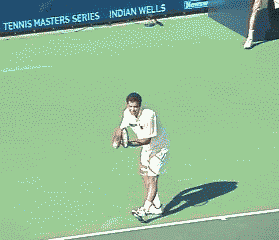
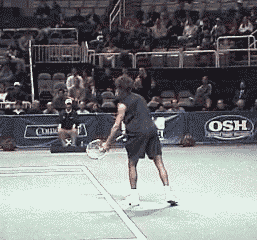
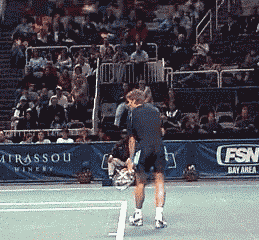
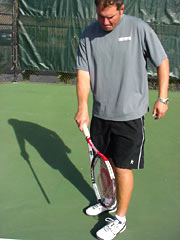
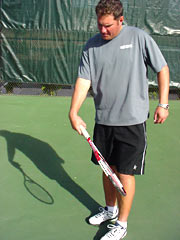
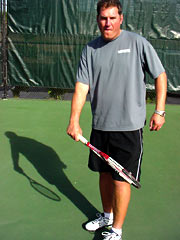
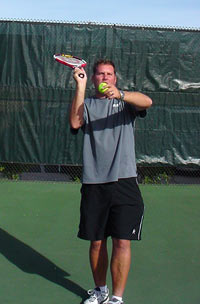
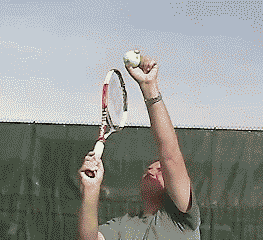
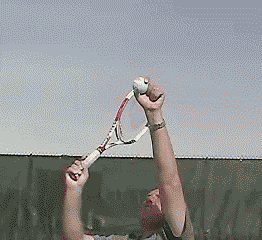
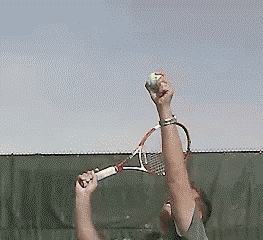
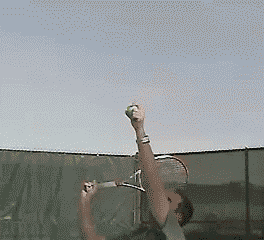
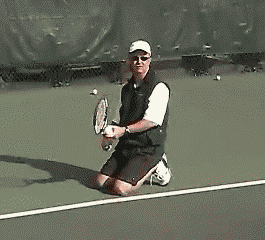
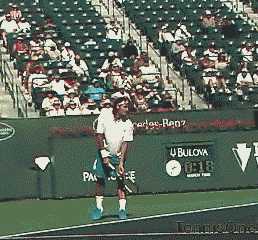
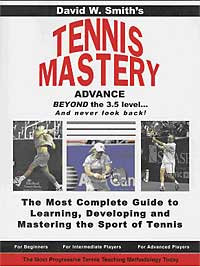 illions of tennis players stagnate at levels far below their potential?
illions of tennis players stagnate at levels far below their potential?  Your comments are welcome. Let us know what you think about this article by
Your comments are welcome. Let us know what you think about this article by